Hunt through the enchanted world of Disney as we take you through the magical timeline of Disney movies in chronological order. From the classic tale of Snow White and the Seven Dwarfs to the futuristic adventures of Big Hero 6, we will guide you through over 80 years of Disney magic. Whether you are a devoted Disney fan or a newcomer to the world of animation, this chronological journey will provide valuable insight into the evolution of Disney storytelling and animation techniques. Join us as we explore the iconic characters, timeless songs, and captivating stories that have made Disney a beloved part of so many childhoods.
The Golden Age (1937–1942)
Before the war and its financial crisis hit, Disney released a string of successful animated feature films that critics and audiences adored. This period is known as the Golden Age of Disney, and it includes some of the most iconic and beloved movies in the company’s history.
Snow White and the Seven Dwarfs (1937)
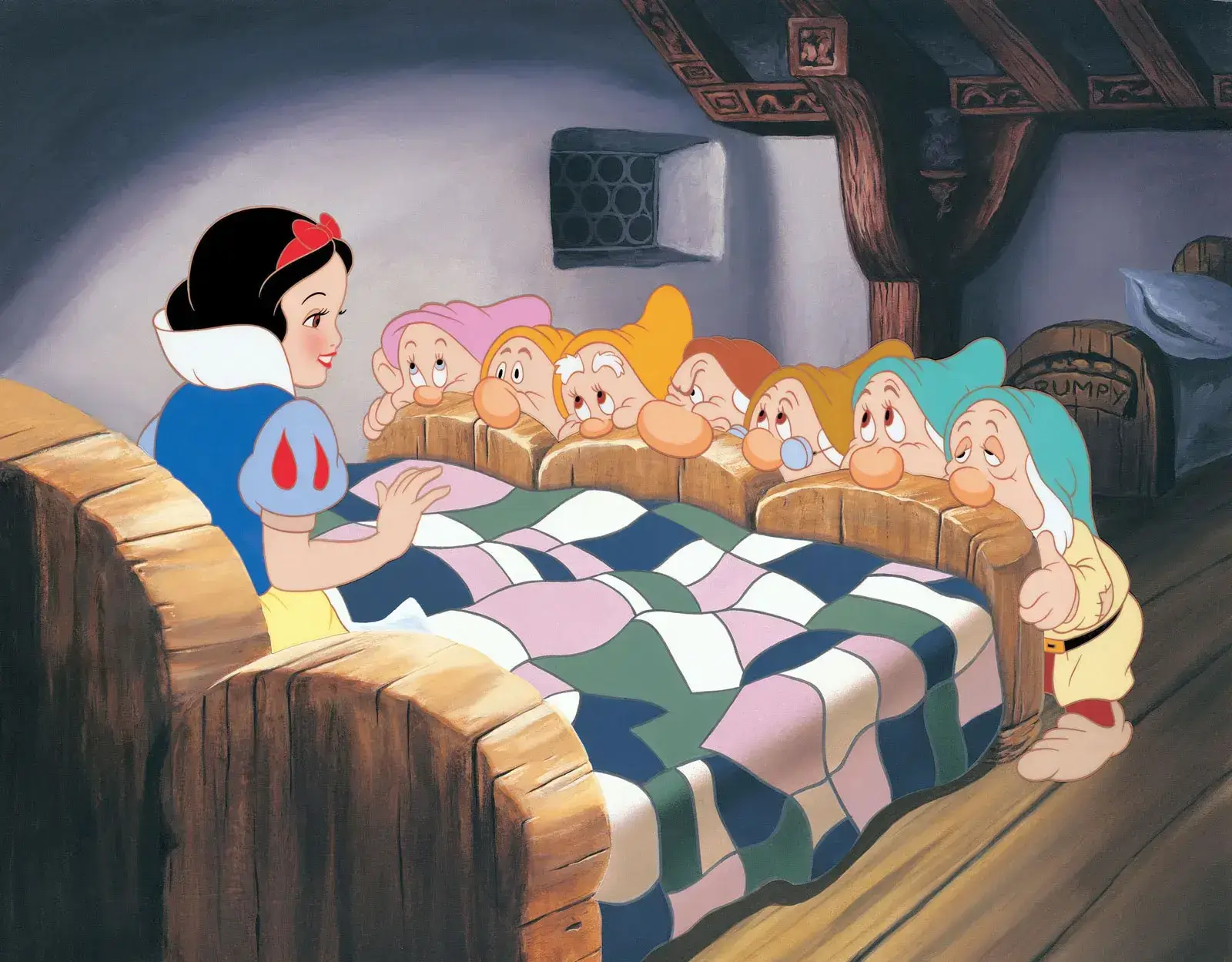
Any discussion of the Golden Age of Disney has to start with Snow White and the Seven Dwarfs, the studio’s first full-length animated feature. Released in 1937, Snow White is a groundbreaking achievement in animation and storytelling. It was a massive success and solidified Disney’s reputation as a leader in the film industry. You can also check their legendary characters names here.
Pinocchio, Fantasia, Dumbo, and Bambi (1940-1942)
Snow White was followed by a string of equally impressive films, including Pinocchio, Fantasia, Dumbo, and Bambi. These movies continued to push the boundaries of animation and storytelling, showcasing the studio’s ability to create compelling and memorable characters and stories.
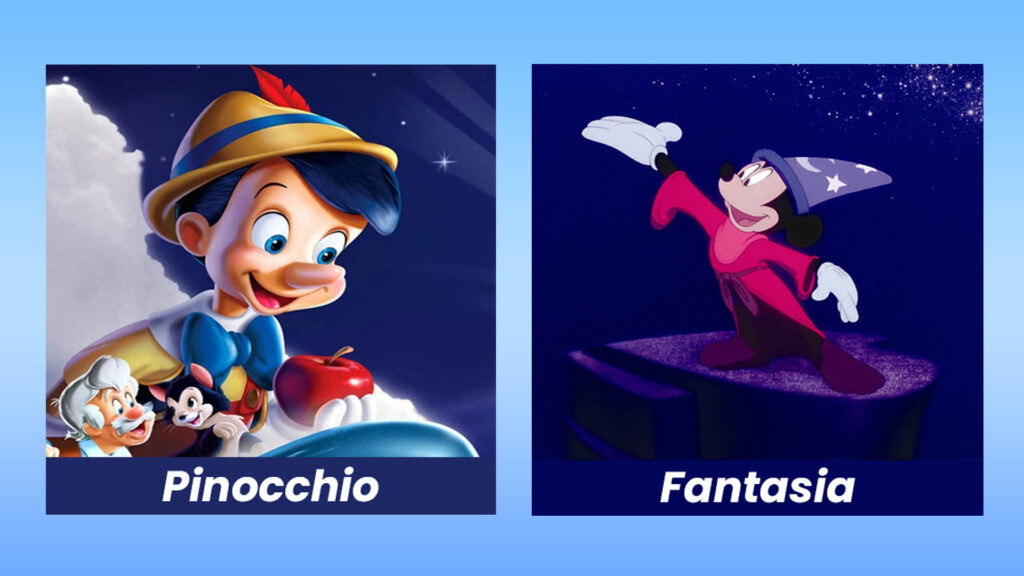
Fantasia, in particular, stands out for its innovative use of music and animation, making it a unique and influential film in the Disney canon. Each of these movies contributed to the success and legacy of the Golden Age of Disney, captivating audiences with their charm, creativity, and technical prowess.

The Wartime Era to the Silver Age (1943–1959)
Clearly, the period from 1943 to 1959 marked a significant transition for Disney movies, spanning the wartime era to the silver age of animation. During this time, Walt Disney Studios faced numerous challenges due to the impact of World War II, ultimately leading to a shift in their film production and the birth of new classics.
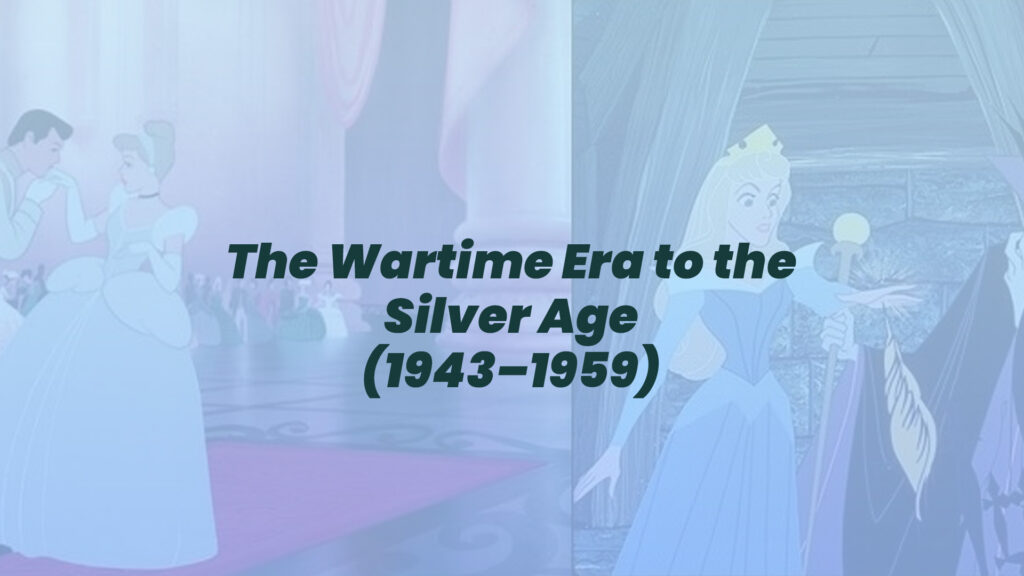
Package Films of the 1940s
To address the financial strain of the war, Disney released a series of package films in the 1940s, which consisted of multiple shorter segments compiled into one feature. These films, such as “Saludos Amigos” and “The Adventures of Ichabod and Mr. Toad,” allowed Disney to continue creating content despite the limitations imposed by the war.

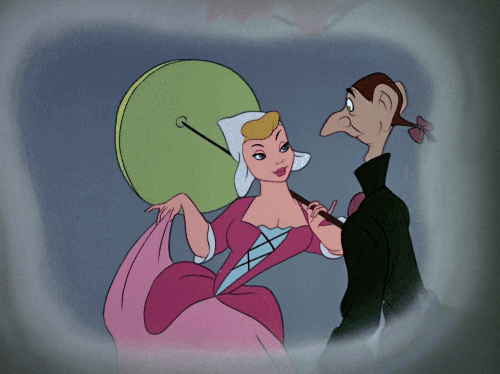

Despite the challenges, the package films of the 1940s showcased Disney’s innovation and ability to adapt to difficult circumstances, laying the groundwork for the studio’s future success in the silver age of animation.
Cinderella to Sleeping Beauty: The Birth of New Classics
To continue their legacy of creating timeless classics, Disney released iconic films such as “Cinderella,” “Alice in Wonderland,” and “Sleeping Beauty” during the late 1950s. These films marked a turning point for the studio, as they embraced a new era of storytelling and animation techniques. The success of these films solidified Disney’s reputation as a leader in the animation industry and set the stage for their future endeavors.
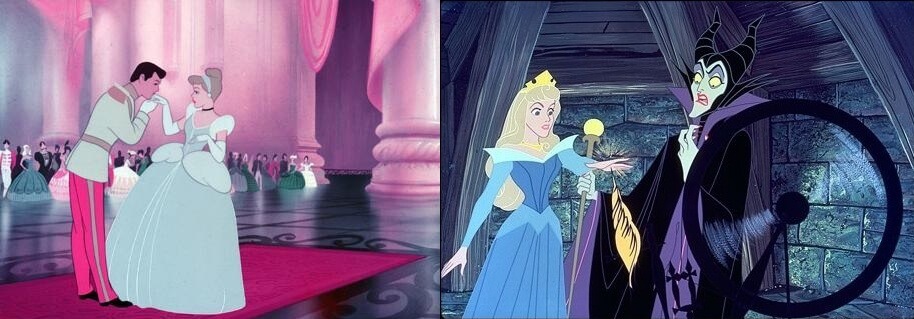
Films such as “Cinderella,” “Alice in Wonderland,” and “Sleeping Beauty” introduced beloved characters and enchanting stories that continue to captivate audiences to this day. These films showcased Disney’s commitment to excellence and their ability to create magical experiences that resonate with viewers of all ages.
The Bronze Age to the Disney Renaissance (1970–1999)

Notable for its distinct shift in storytelling and animation style, the Bronze Age of Disney marked a period of experimental creativity and transition leading to the renowned Disney Renaissance. This era saw the release of classic films such as Robin Hood, The Rescuers, and The Fox and the Hound, each contributing to the studio’s evolution.
The Aristocats to The Fox and the Hound: Transition Period
Disney entered a phase of exploration and innovation during this time, incorporating new storytelling techniques and widening its genre range with films like The Aristocats, The Many Adventures of Winnie the Pooh, and The Fox and the Hound. The studio’s dedication to pushing creative boundaries and diversifying its portfolio set the stage for the revolutionary period that followed.

The Little Mermaid to Tarzan: A Revival of Disney Animation
Disney experienced a revitalization with the release of The Little Mermaid, Beauty and the Beast, Aladdin, The Lion King, and Tarzan. Each film showcased the resurgence of Disney’s signature animation style, captivating storytelling, and unforgettable musical scores. This era marked a return to the classic Disney formula, earning critical acclaim and solidifying the studio’s position as a leader in the world of animated filmmaking.

Little Mermaid to Tarzan: A Revival of Disney Animation began a new era for the studio, leading to the development of iconic characters, timeless stories, and groundbreaking animation techniques. The period proved to be a turning point for Disney, setting the stage for its continued success and influence in the years to come.
Modern Disney and Beyond (2000–Present)
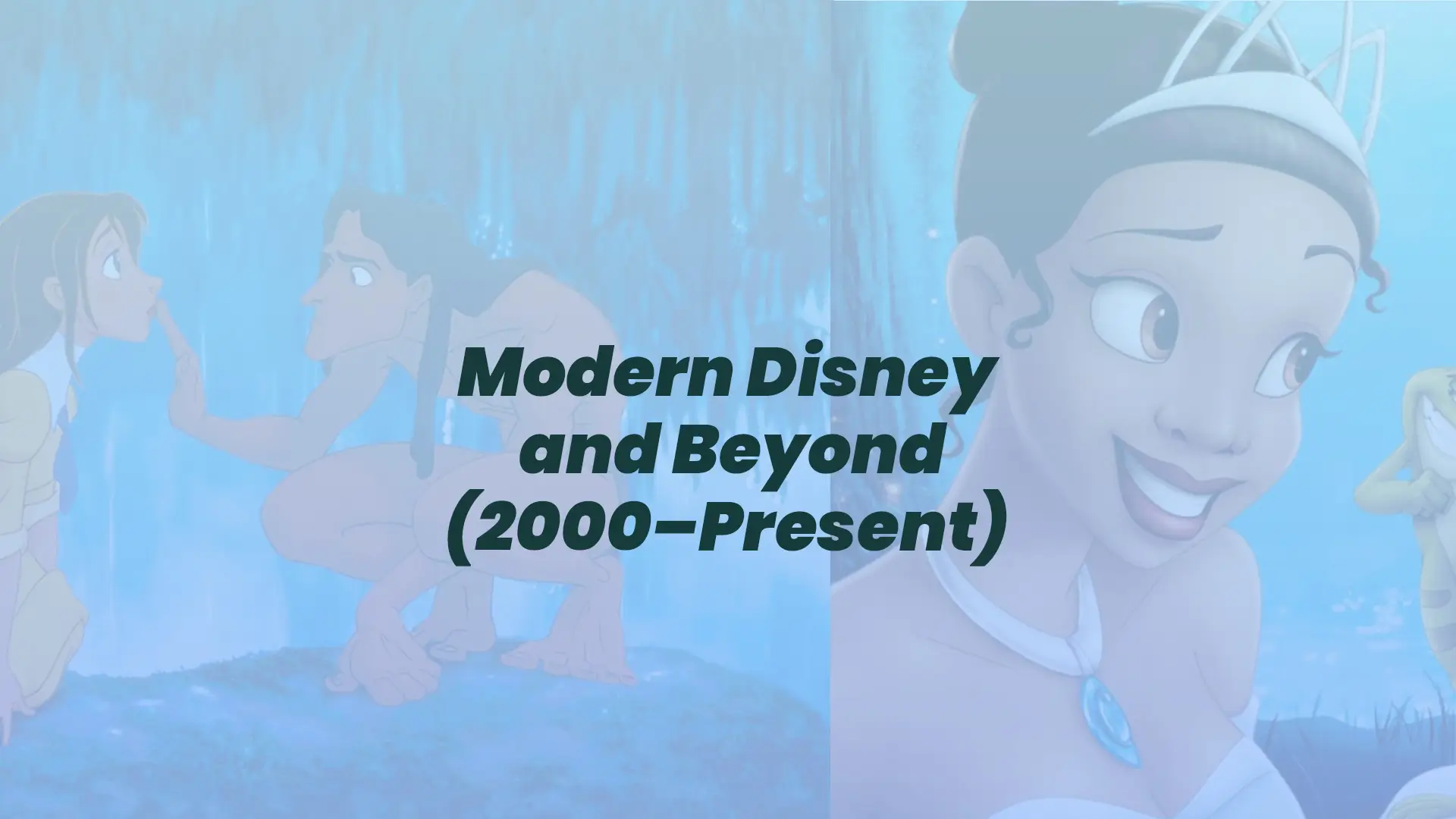
With the turn of the millennium, Disney entered a new era of animated storytelling. The studio embraced new technology, embraced diversity, and continued to captivate audiences with their timeless tales and unforgettable characters.
Fantasia 2000 to Chicken Little: Embracing New Technology

One of the standout features of this era is the continued embrace and utilization of new technology in animation. From the groundbreaking release of “Fantasia 2000” to the innovative use of computer-generated imagery in “Chicken Little,” Disney continued to push the boundaries of animation technology. These films showcased the studio’s commitment to innovation and their ability to adapt to new advancements in the industry.
The Princess and the Frog to Encanto: Diversity and Contemporary Storytelling
With the release of “The Princess and the Frog” and “Encanto,” Disney demonstrated a commitment to telling diverse and contemporary stories. With the first African American Disney princess in “The Princess and the Frog” and the celebration of Colombian culture in “Encanto,” the studio embraced a new era of storytelling that resonated with audiences from all walks of life. With these films, Disney continued to evolve their storytelling, reflecting the changing cultural landscape and celebrating the diversity of the world we live in.

Technology continued to play a crucial role in the creation of these films, with advancements in animation bringing these diverse and contemporary stories to life in breathtaking detail. The use of computer-generated imagery and digital animation techniques allowed for a more immersive and visually stunning experience, enhancing the storytelling and creating a deeper connection with audiences. Disney’s commitment to embracing new technology and diversity in storytelling has solidified their place as a trailblazer in the world of animation.
Conclusion Disney Movies in Chronological Order
Now that we have explored the vast and enchanting world of Disney movies in chronological order, it is clear that these beloved films have had a profound and lasting impact on popular culture. From the classic fairytales of the 1930s to the innovative CGI animated features of the 21st century, Disney has consistently captivated audiences of all ages with its unforgettable characters, powerful storytelling, and timeless musical numbers. As the legacy of Disney continues to grow, it is evident that these movies will continue to hold a special place in the hearts of countless fans around the world, transcending generations and leaving an enduring legacy that will stand the test of time.
We have also cover other movies and series in orders, so check our insightful guide blogs below:

